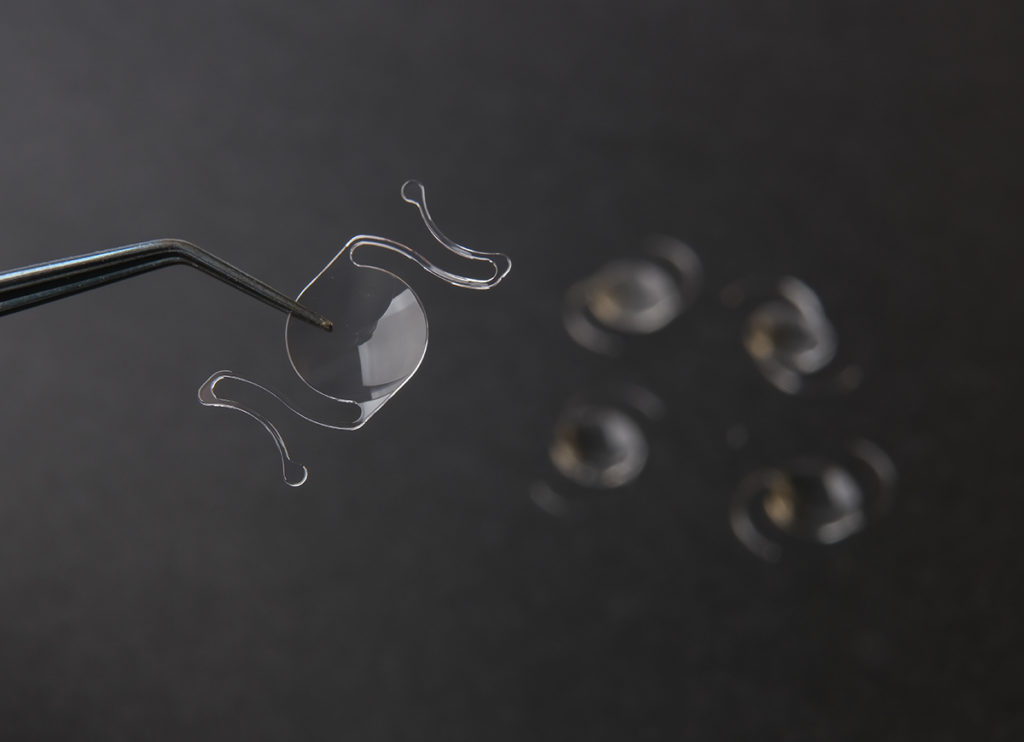
The path to visual freedom looks different for many people. Some circumstances disqualify men and women from LASIK or PRK, but they still want to get rid of their glasses and contact lenses if possible. Implantable contact lenses and refractive lens exchange are two alternative options for improving vision using different methods. Our Toronto ophthalmologist will discuss your vision correction options during your eye exam and recommend the procedure that will provide the best eyesight possible safely and effectively.
Pros and Cons of Implantable Contact Lenses
Implantable collamer lenses (ICLs) are artificial contact lenses surgically placed between the pigmented part of the eye (iris) and the natural lens. These permanent contacts correct for myopia (nearsightedness), hyperopia (farsightedness) and astigmatism and are called phakic because they do not remove any tissue from the eye.
People who do not qualify for LASIK can benefit from ICL surgery to reduce dependence on glasses and contact lenses or get rid of them altogether. Some patients prefer implantable lenses because they are removable (though designed to be permanent) and are less likely to lead to dry eye syndrome (a common LASIK complication). Laser vision correction has limitations for high myopia because of increased risks, but ICL surgery can correct severe nearsightedness.
Recovery after ICL surgery is quick because none of the eye tissue is removed or altered. However, as with all eye surgeries, there are risks, including early cataract formation, blurry vision, infection, glaucoma and other complications if the ICL is not precisely fitted in position.
Pros and Cons of Refractive Lens Exchange
Refractive lens exchange (RLE) is essentially the same as cataract surgery, except that the natural eye lens is clear and not clouded. Two incisions are made, one in the cornea and a second in the lens capsule behind the pupil. The lens is broken up and suctioned out, then replaced with the chosen intraocular lens implant (IOL) to correct refractive errors and presbyopia.
People may choose to have RLE if they have high nearsightedness or farsightedness and are not good LASIK candidates. RLE is a quick procedure with a rapid recovery. It doesn’t change the shape of the cornea (unlike LASIK) but corrects vision with IOLs customized to the patient’s vision prescription. These IOLs can correct for age-related blurry near vision (presbyopia) caused by the hardening of the eye’s natural lens. RLE removes the eye lens, eliminating the risk of presbyopia and cataracts in the future, and IOLs are designed to last a lifetime.
RLE is ideal for people 45 and older with refractive errors and presbyopia, but severe nearsightedness can increase the risk of retinal detachment. Other potential complications include over- or under-correction, infection, bleeding, glaucoma and others.
If you’re not a good candidate for LASIK, you have several other options to eliminate prescription eyeglasses and contact lenses. Dr. Raymond Stein can determine the best procedure and technique to improve your eyesight safely for the best visual outcome.
Schedule an eye exam with Dr. Stein in Toronto, Ontario, today to learn more about your vision correction options. Call (416) 960-2020 for an appointment.
